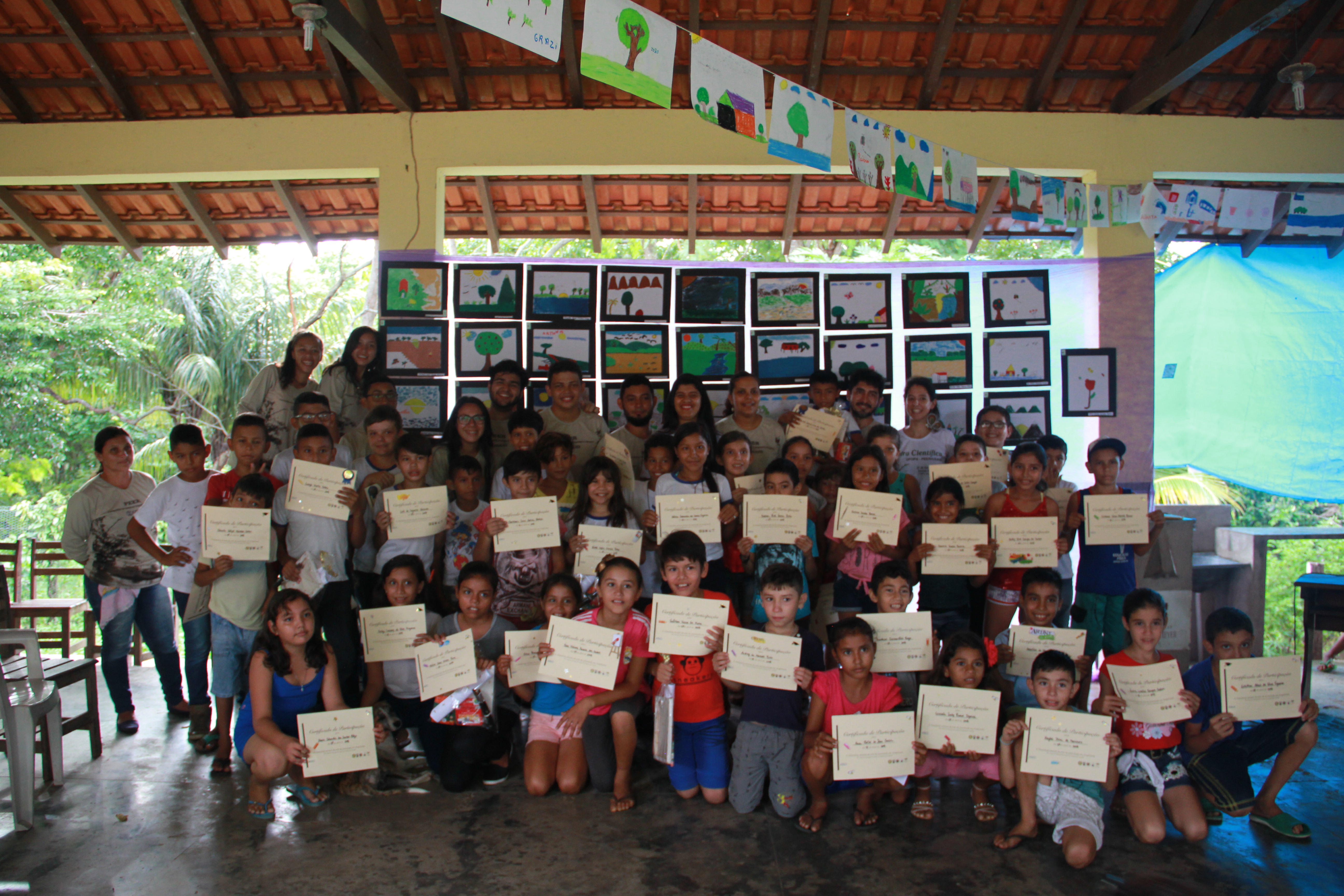
Clau looking down and over the river bank with Arapixuna behind her.
“Tudo bem, Sarah, tudo bem? How are you? Tudo bem” my co-teacher Clau laughed as I stumbled over the grammatical differences between tudo bem and tudo bom. Language lessons were a way of life for the week I visited Arapixuna in April. Partly because I filled my evenings listening to scientists and students around me chatter in crescendos and decrescendos, the foundations of Brazilian Portuguese. And partly because I filled my days conversing with 5th graders about the world’s largest river and rain forest. Managing the chaos of field trips, science demos and art classes for 46 young learners, sometimes all I could say was “tudo bem”, the famously succinct and casual phrase for “all is well”.
Arapixuna is a flooded rain forest community between the Amazon and Tapajós Rivers. In this corner of Amazonia, it used to export oranges. Indeed, fruit trees still thrive there, wherever there aren’t roads, buildings, and cropland. I can imagine boats full of oranges navigating brown river channels from Arapixuna towards the clearer, bluer waters of the Tapajós River, towards the harbor of Santarém, the closest city and my thesis home base in 2014.
In April 2018, I rejoined Dr. Jose Mauro S. Moura, in the middle of another rainy season, to teach a one-week STEAM (STEM + art) workshop with 4th-6th graders in Arapixuna. Not unlike all of my field trips to Santarém and Óbidos, Jose, his university team (Clau and Fran), and I arrived in Arapixuna with a plan to learn. But, for the first time since starting my thesis work here, I was not weighed down by heavy metal cylinders for water collection and 300 feet of rope to suspend off a boat. Instead, these bags were heavy with acrylic paints, oil pastels, and thick reams of watercolor paper.
Similar to my first field trip four years ago, the Amazon and its tributaries were rising onto the river banks. As Jose, Clau, Fran and I crossed the Arapixuna channel, the community appeared from a plateau above, with plaza, school, church, and medical station well above the rising water lines.

The final graduation ceremony included a community-wide exhibition of nearly 50 student artworks from Escola Sant’Ana.
During our collaboration with young scientists and artists in Arapixuna, we discussed the water cycle, rain forest biodiversity, and how both govern the way people experience the river that fills their backyards. We practiced the scientific method and communicated with artistic techniques. A collection of photos can be viewed here: https://cureforcymophobia.wordpress.com/2018/07/21/amazonia-through-the-eyes-and-easels-of-its-youth/
They are a subset of 46 student artworks created in this week-long process of learning and exchange. These works join a worldwide student exhibition through the Global Rivers Observatory. Jose and his colleagues continue to collaborate with community there to study the flooded rain forest ecosystem.
I invite you to just consider what these artworks show. Maybe they help illustrate the people that live and see Amazonia. Maybe they help us see how those geochemical measurements that I described in my earlier blog entries from field work past relate to these individuals. Finally, maybe they help us think about how we can learn as much about the rivers from these communities as they can learn from our scientific inquiries.
Special thanks to our funders of this project: Association for the Sciences of Limnology and Oceanography, University of British Columbia Ocean Leaders Program, Universidade Federal do Oeste do Pará, Woods Hole Oceanographic Institution, Woods Hole Research Center
Sarah Rosengard is a post-doctoral fellow in the Training Our Future Ocean Leaders program.
